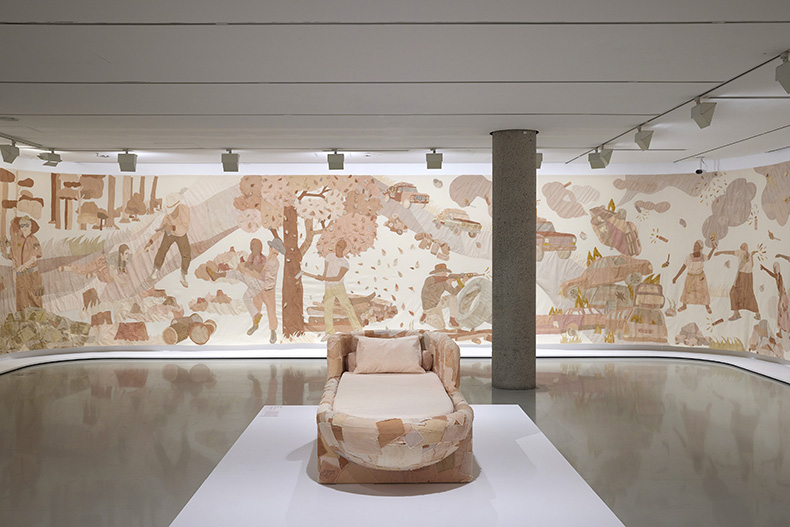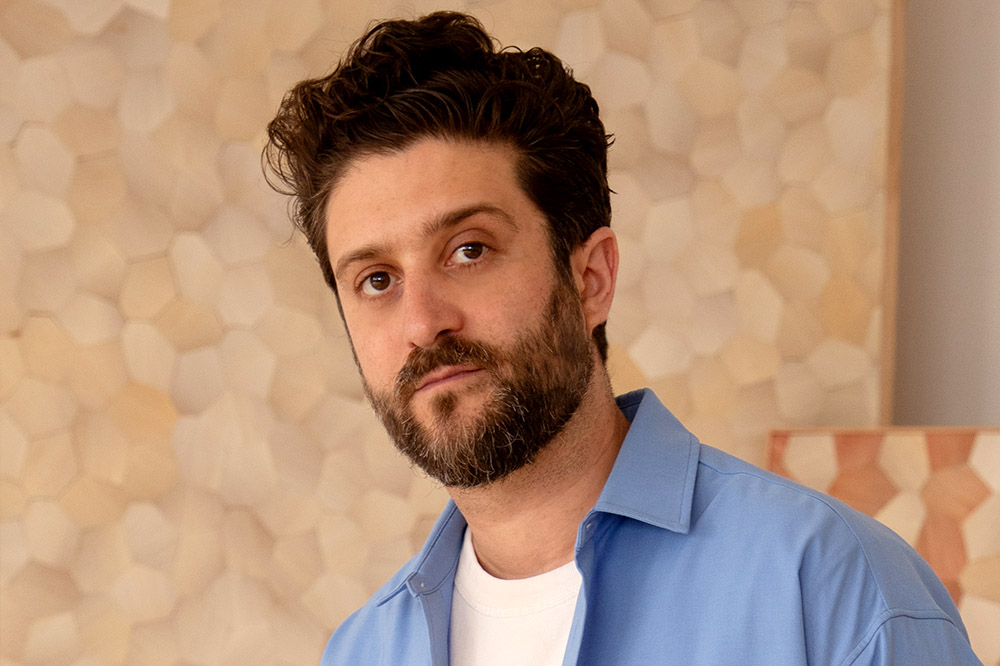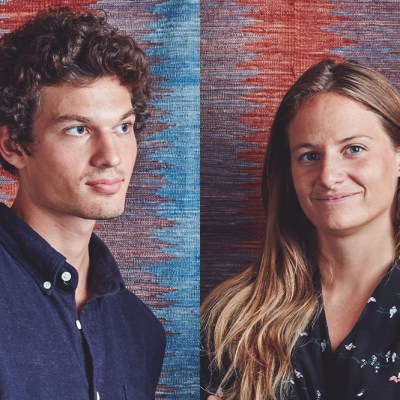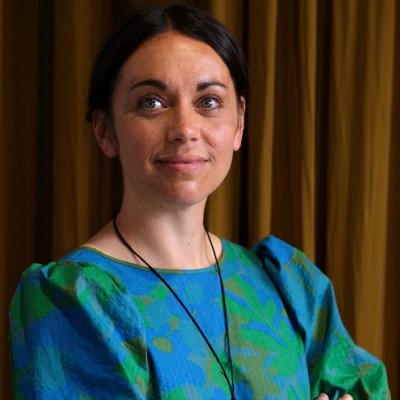London/Mexico City
The term craft can often be seen as a byword for tradition. But for the Mexican artist and furniture designer Fernando Laposse, craft is an opportunity to marry the tried and tested with invention. ‘There are many ancient craft practices in Mexico [but] a lot of them were developed in the 20th century,’ he tells me. ‘There are always people pushing the needle in new directions.’
Laposse, though too humble to say it himself, is certainly one of those people. Having grown up in Mexico City, the son of a painter and a baker, he has always understood that invention and craftsmanship can, and should, go hand in hand. He left Mexico to study design at Central Saint Martins in London, but always felt that he would return to his home country, finding aspects of the ethos at art school harmful – in particular, the acceptance of mass and machine production, and the heavy use of plastics.
Laposse uses the coloured husks of Mexican heritage corn to adorn furniture, such as this table. © Fernando Laposse
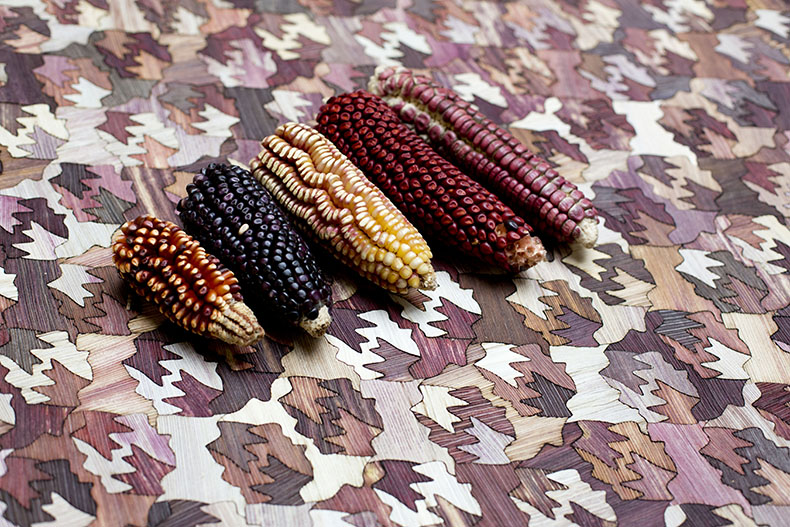
After his degree finished in 2012, he returned to Mexico and embarked on a residency at the Centro de las Artes de San Agustín, Oaxaca, which had been set up by Francisco Toledo (1940–2019): an artist and activist who was at the forefront of Mexico’s fight against genetically modified corn from the United States that flooded the market in the 1990s. Though it has since banned the farming and import of GMO corn for human consumption, at the time the Mexican government were dragging their heels on the issue, since the low cost of GMO corn was beneficial: ‘The corn tortilla is to Mexico what the baguette is to France,’ Laposse says. ‘If people can’t afford a kilo of tortilla, heads roll.’ But the downsides of these GMOs were plain to see: native varieties of corn were being squeezed out of the market, their existence put at risk due to cross-pollination, and, in the wake of cheap imports, Mexican farmers have been put out of business on a massive scale.
Laposse started his project Totomoxtle (‘corn husks’) in 2015 as a way of using native varieties of corn as a decorative material. Heritage corn has beautifully coloured and variegated husks, which, Laposse found, could be harvested, flattened and laminated to resemble wood veneer, and then used to decorate cabinets, tables and all manner of objects.
Legacy Table Curtain made by Fernando Laposse, with the surface decorated using Totomoxtle. © Fernando Laposse
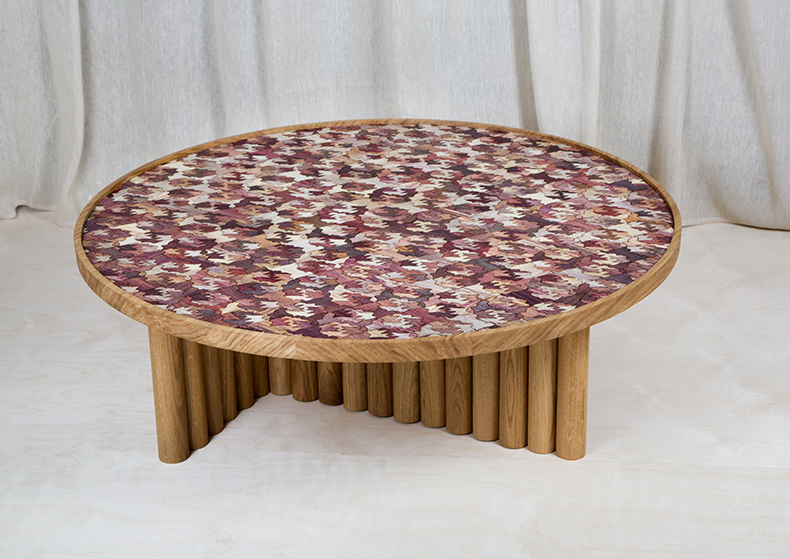
The results are stunning: Laposse’s pieces sell for tens of thousands, and he has exhibited his works in institutions such as the V&A in London and MoMA in New York. But the heart of the project, for Laposse, is its community aspect. Laposse has focused his efforts on Tonahuixtla, a village in the Sierra Mixteca where he spent childhood summers, sourcing a small number of endangered seeds from the International Maize and Wheat Improvement Center and helping local farmers plant these endangered varieties of corn. A decade on, the village has been transformed: Laposse covers the initial costs of planting and pays the farmers to harvest the husks, which would otherwise be thrown out. Laposse has created jobs for locals, runs craft workshops in the village and has set up a seed bank. It’s a sustainable model that provides both food and the raw material for Laposse’s designs. His enthusiasm for the social benefits of the project is palpable: ‘It’s not that Tonahuixtla was a village of artisans losing their craft. No, this is a completely new material and craft’, a regenerative system in which ‘anyone in the community, man or woman, can come and become a new craftsperson within a week.’
Avocado leather cabinet made by Fernando Laposse for the project ‘Conflict Avocados’ (2023). © Fernando Laposse

Since the inception of Totomoxtle, Laposse has experimented with using other natural waste materials in similar ways. He has developed a technique for scraping agave leaves to harvest sisal, which he uses to make his signature ‘hairy furniture’ – stools and benches that resemble gloriously hairy yaks – as well as playful hot-pink sculptures of sloths and other animals. As a result, he has planted more than 200,000 agaves over the last decade. Another of his techniques, inspired by the ‘meteoric ascent of the popularity of avocados’ around the world and the deleterious effects of their overfarming on Mexico’s biodiversity, involves extracting dye from avocado stones and using the skins for marquetry. For the 2023 NGV Triennal in Victoria, he exhibited a 40m-long tapestry coloured with avocado-stone dye alongside an elegant cabinet covered in avocado-skin marquetry, which took him eight months to make.
Laposse is realistic about his ambitions for Totomoxtle: ‘I would like to concentrate on this town for the moment, because my fear is spreading myself too thinly.’ Nonetheless, he has, at the age of 37, developed an approach to craft that implements tangible change in a community. ‘I’m not delusional. I’m not going to solve the global problems caused by the corn and avocado trade,’ he says, ‘but I can make an impact’. Totomoxtle is a ‘model that hopefully can be replicated by others,’ he says with a glint in his eye. ‘If you talk about Totomoxtle as a craft project, people say, “you began in 2015 – that’s already an old project”. But if you speak to anyone who knows about reforestation and soil regeneration, they say “oh, you’re just getting started”.’
Installation view of Fernando Laposse’s display ‘Conflict Avocados’ at the 2023 NGV Triennal in Victoria, Australia, showing a section of his 40m-long tapestry, coloured with dye extracted from avocado pits, and a patchwork daybed standing in the foreground. © Fernando Laposse
